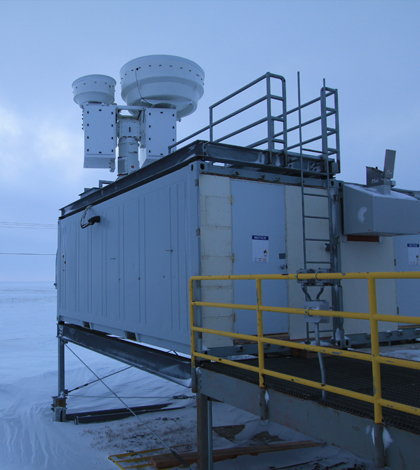Experiment first to show CO2 emissions disrupt Earth surface energy balance

Researchers studied what effect carbon dioxide has on the planet's surface energy balance. (Credit: Jonathan Gero)
Researchers from the Department of Energy’s Lawrence Berkeley National Laboratory have shown experimentally for the first time that carbon dioxide emissions have disrupted the planet’s surface energy balance, according to a recent press release.
The Earth’s surface energy balance is a delicate interplay of two factors: energy coming in from the sun, and energy absorbed by the Earth being released back into the atmosphere. Although lab results showed that the effect of increased carbon dioxide on this system would tip the balance toward rising amounts of heat on the Earth’s surface and in the atmosphere, the lab results were not confirmed experimentally until this work.
Positive radiative forcing is when the Earth is absorbing more energy than it is radiating back into space. The scientists were able to show an increase in this effect from rising carbon dioxide using very precise infrared spectroscopic measurements unique to the gas in two separate locations many miles apart in Alaska and Oklahoma.
The surface data gathered by the lab supports climate data used by current models to predict the effects of atmospheric and surface warming. The surface data also suggests that most of the increase in carbon dioxide is due to human burning of fossil fuels.
Top image: Researchers studied what effect carbon dioxide has on the planet’s surface energy balance. (Credit: Jonathan Gero)





0 comments